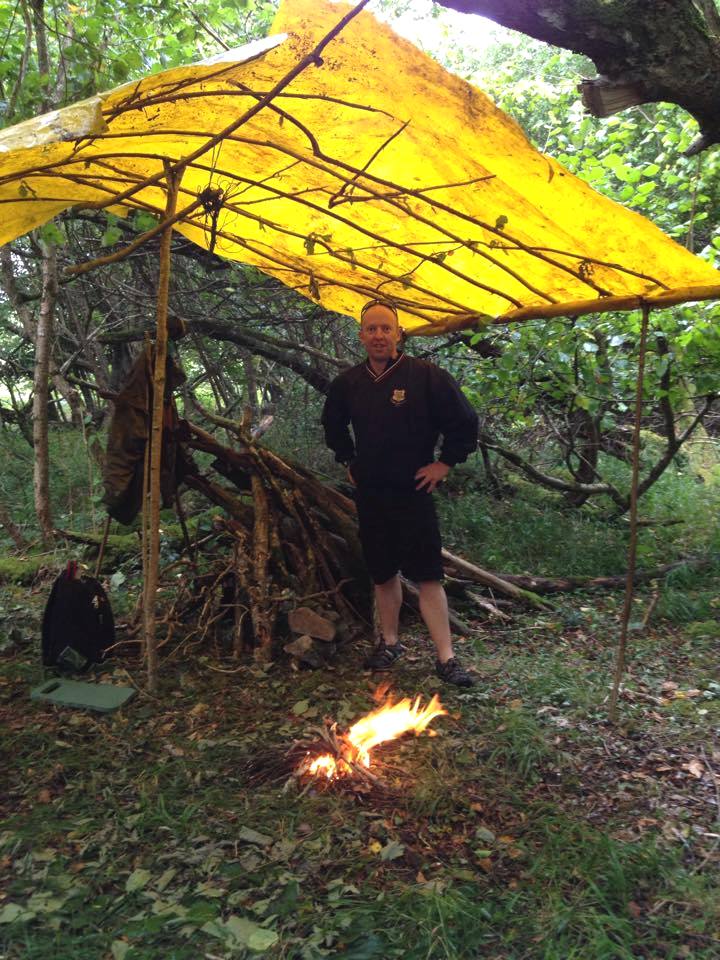By Sean Fagan

Enjoying a small camp-fire under an improvised tarp (Photo: Sean Fagan - west Ireland/2016).
Leave no Trace of Shelters
.
With tarps there can be the temptation to leave one standing if one is planning on making multiple return visits to an area.
On the face of it, it can seem very convenient to leave a permanent tarp - rather then go through the hassle of taking it down, packing it away - then re-erecting the tarp on each visit.
This is especially true of improvised tarps (such as the tarp in above photo) as they generally take a lot longer to take down and erect than modern camping tarps.
My general advice?
Take down your tarp when it's not in use.
Why? Mainly because windy weather can damage even the most sturdy tarp if left alone for long periods of time (even curious, wild animals can damage a temporarily abandoned shelter such as a tarp).
It's also not nice to be leave shelters that other people may stumble upon - as well as being an eyesore, its sets a bad example.
.
One of the less known secrets of bushcraft is shelter maintenance.
In the case of a tarp, only the person that erected his or her tarp can make those necessary, timely adjustments to ensure its proper maintenance (such as adjusting the tension of the guy lines during windy weather so the tarp will not become unduly strained).
When left alone for long bouts of time, shelters - especially somewhat vulnerable, suspended shelters like tarps, will often become damaged - making the whole idea of repeated return visits to a standing tarp - redundant.
Of course this advice does not apply to more sturdy, long-term shelters such as cabins but it certainly applies to less robust shelters like tarps & tents.
.
It's certainly possible to make a tarp structure that is exceptionally well-made and robust - but for the majority of tarps, especially modern tarps, it's a good idea to take them down when not in use.
In addition, the repeated erecting, taking down and packing of a tarp is a good skill-set - which will pay off, for example, when time is short - such as quickly erecting a tarp before nightfall or before an imminent burst of rain.
Those are the times when competence with a tarp is both desirable and important.
.
The content of this short post also ties in with another important, bushcraft-related topic - take good care of your kit.
Whether it's your tarp, knife, compass or axe...keep them in top nick and they will serve you well.
.
.
“I learned how much of what we think to be necessary is superfluous; I learned how few things are essential, and how essential those things really are.”
~ Bernard Ferguson
.
.
.
Related articles on this website:

Recent Comments